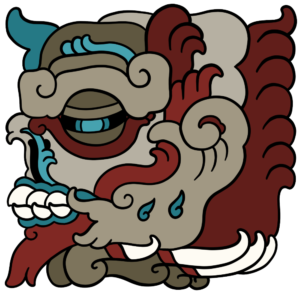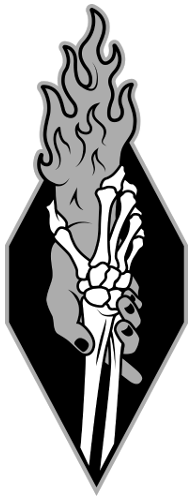Those who live with darkness may draw comfort, inspiration, or a thrill from death and the dead. Some seek guidance from their ancestors; others pray to the goddess of death; some just think skulls are cool. Demonkind appreciates all of these; our emphasis on science leads us to avoid superstition, yet our desire for the living to have a more positive and engaged relationship with the act of dying leads us to welcome ceremonial and artistic expressions of death culture.
At the same time we envision people who live in a purposeless stupor, people who unquestioningly follow poisonous leaders, and people who dwell in morbidity without emerging, to be symbolically dead. You enter a state that might as well be death when you fail to engage with life. In this regard, Demonkind intend to break the spell and guide these zombies back to a state of wakened vitality.
Of course we did not invent the message of “waking the sleeper”–countless groups have used that archetypal idea over the centuries. At some Buddhist monasteries they ring a bell occasionally in order to interrupt internal chatter in the monks’ minds and redirect them back to mindfulness. We all need these reawakenings, in small ways daily, as well as larger alerts when our lives may drag into doldrums and old habits.
Necromancy and Vodun have historically meant raising or summoning the dead in order to use them as slaves, or to demand information, so the risen souls have no agency or will of their own. Demonkind want to help people throw off their shroud, take the coins off their eyes, and reclaim their own fire and impulse to thrive. Let those now living actually LIVE! Our symbol depicts a person on fire clasping the arm of a dead person, and raising them up.
It might seem confusing to venerate death in one context and denigrate death in another. But multiple seemingly contradictory things can be true at the same time. The death we venerate is the real bodily death that awaits everyone regardless of how they live. The death we denigrate is the metaphorical death of a person failing to live well.
Wearing symbols of mortality does not, by itself, indicate one or the other. Demonkind urges you to imbue your adornments with intention and purpose, to choose and use symbols that have actual meaning for you, and that do not drag you into the shallow grave of apathy. Marking ourselves with skulls and reapers and such can be a plaintive cry that we are already dead on the inside, or it can be a celebratory shout that we reclaim our engagement with both life and death, dancing eternally together!

The Greek word “katabasis” means to travel to the underworld to discover something that we could not find on the surface. In early usage it meant the necromancy of going to a place where you can speak with the dead, and asking them for answers. More recently, Jung used it to describe “the night sea journey of the hero”, traveling and diving deep into the subconscious mind to wrestle directly with our worst fears and our damaged, harmful inner selves.
Demonkind believe in facing these spirits of death head on, acknowledging and naming them, and healing ourselves from their influence by shining light upon them. In this way we achieve “anabasis”, returning from the land of the dead, and through this experience we gain the strength and inner light that can help others find their way.
As mentioned in our article On Darkness, we strongly support and enjoy cultural public engagement with mortality, celebrating in the style of Dia de los Muertos or participating in educational work like the #deathpositive movement. The more we familiarize ourselves with death, the more comfortable we become with it, and the less we have to fear. The less we fear, the more we may live boldly, fully, and without inhibition.
This familiarization also connects and intertwines with the Rite. You might choose to directly name and personify death, or fear of dying, in your practice of the rite. Even if you don’t, the same premise applies as we invite ease around the idea (and corporeal reality) of death: something we fight to keep distant will torment us always, yet if we welcome and feed it, the same beast will give us comfort and strength when we need it most.
We do not seek to speak with the dead; we wish to speak with Death itself. Each time we have this conversation, it reminds us not to fear the inevitable, but instead to thrive for every moment until then. Thus we have gone to the underworld, learned something valuable, and returned with renewed vitality to our lives above ground.
